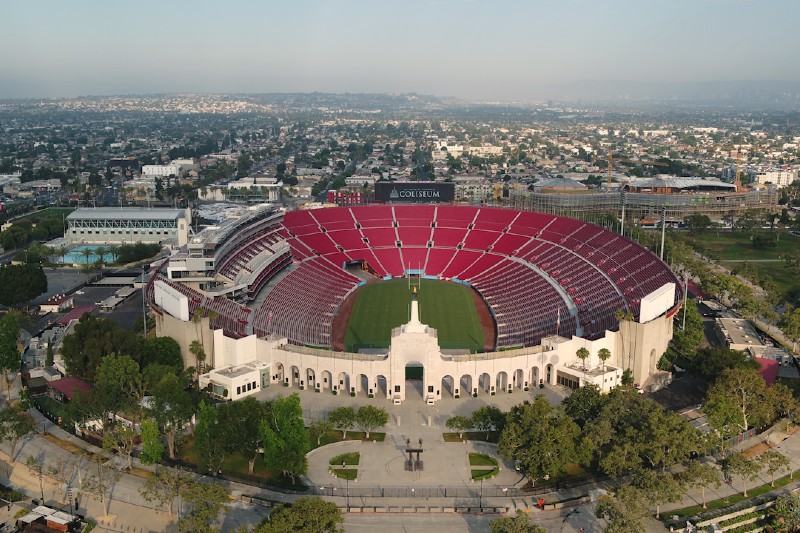When the NASCAR Cup Series visits the Los Angeles Memorial Coliseum for the first time in February 2022, the Busch Light Clash will also be unprecedented. On Tuesday, NASCAR revealed the format for the exhibition race, which entails four heat races, a Last Chance Qualifier, and a twenty-three-car grid for the main event.
As the 2022 Clash will be held on a short track in a stadium, a concept that was last tried at the Cup level in 1971 with Bowman Gray Stadium, the format leans heavily on a grassroots style. Heat races are also quite rare for NASCAR’s national series, having only been used for the dirt races at Bristol and Knoxville and on an experimental basis in the Xfinity Series (the Daytona 500 also features a pair of qualifying races).
To raise the stakes, forty teams may enter the Clash, a far cry from the exhibition only allowing pole winners and drivers who meet certain criteria. Of course, a quarter-mile short track cannot feasibly fit that many cars, meaning qualifying races will whittle the grid down.
“There has already been an enormous amount of buzz around next year’s Busch Light Clash at the Coliseum, and we feel that this race format and the accompanying programming throughout the entire weekend will only build on that already established momentum,” said NASCAR senior vice president of strategy and innovation Ben Kennedy. “The unprecedented nature of this event, coupled with the fact that our sport will be in the spotlight in the middle of downtown Los Angeles, makes this a can’t miss event when we get our 2022 season underway next February.”

Saturday, 5 February 2022 will see the first day of action with practice. Single-car qualifying will take place to determine the starting lineup for the four 25-lap heat races on Sunday. The top four in qualifying will start on the pole for each heat, and will be joined on the front row by whoever finished fifth through eighth. The rest of the grids are filled in increments of four, such as Heat #1 having the ninth, thirteenth, seventeenth, and twenty-first fastest cars and so on.
The four best finishers in each heat are locked into the Clash later on Sunday, 6 February. Heats #1 and 2’s winners start on the front row.
Those who did not advance to the Clash via the heats must go through one of two 50-lap Last Chance Qualfiers. The starting lineup for the LCQ is based on finishing position, with the first drawing drivers from Heats #1 and 3 and the second from the even-numbered qualifying events. The top three in each will move on.
The Clash, 150 laps in length, will consist of twenty-three drivers. The first twenty-two positions are based on the heats and LCQs, while the twenty-third and final spot goes to whoever finished highest in points in 2021 but did not qualify through the qualifying races.
Track construction will begin on 20 December. The stadium has long hosted the University of Southern California Trojans football team, though USC’s season ends in November.



